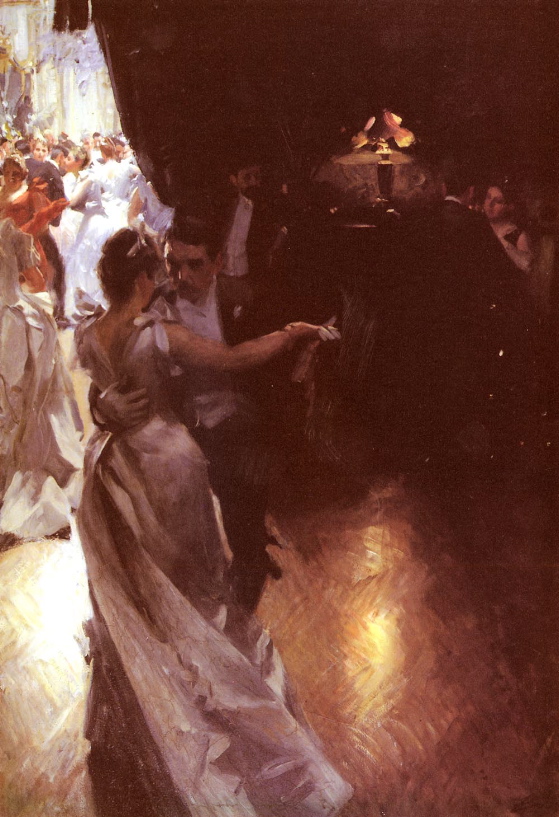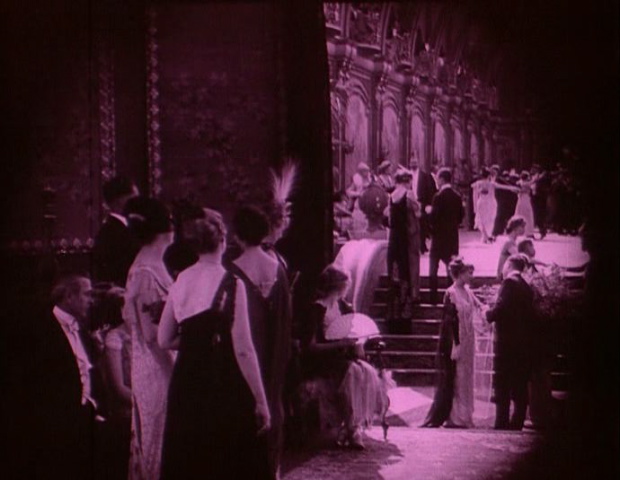
Here is Anders Zorn at his most academic. The composition offers a dramatic illusion of deep space, with an optical integrity which evokes the photograph — but it’s all inflected with the suggestion of narrative, as we’re invited into the darkened area just off the ballroom where private intercourse is taking place.
And yet for all this we still have Zorn’s delightful treatment of the
surface of the canvas, with its sensual strokes reminiscent of the
Impressionist style, its magical ability to render the subtlest play of light.
The total effect can only be described as cinematic — and wouldn’t it
be nice if cinema offered more images as exciting as this one, visually
and plastically?
I think it’s possible that this image was in the back of D. W. Griffith’s mind when he composed the shot below from Intolerance, with its own darkened area just off a ballroom that opens up brightly behind it:

As I’ve written before, we tend to see early film as a medium emerging
from the Victorian stage, but Griffith himself wrote this about Intolerance:
“You will see the world’s greatest paintings come to life and move and have their being before your eyes.”
The important thing to remember is that painting itself, even before
the invention of movies, was aspiring to the condition of cinema.
The spatial depth of Zorn’s image, its desire to evoke movement in
space, found a kind of fulfillment in the cinema, especially in the
cinema of D. W. Griffith.
